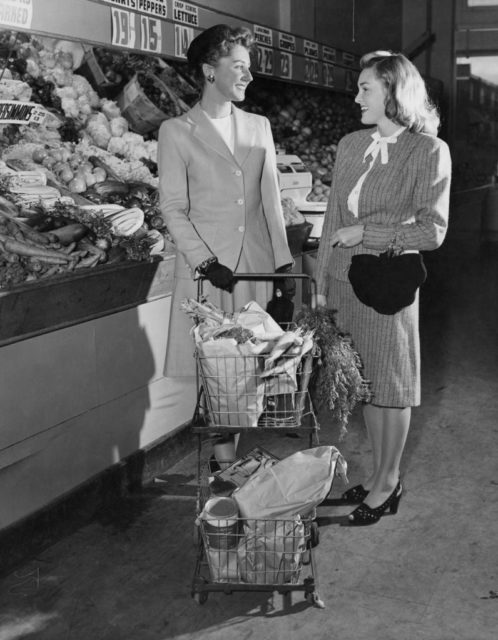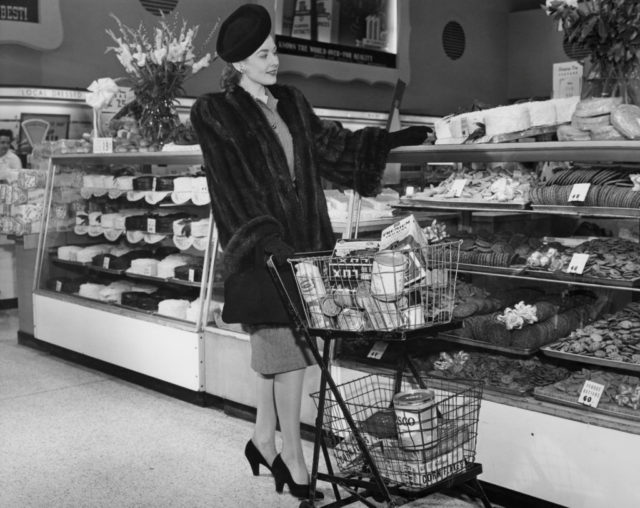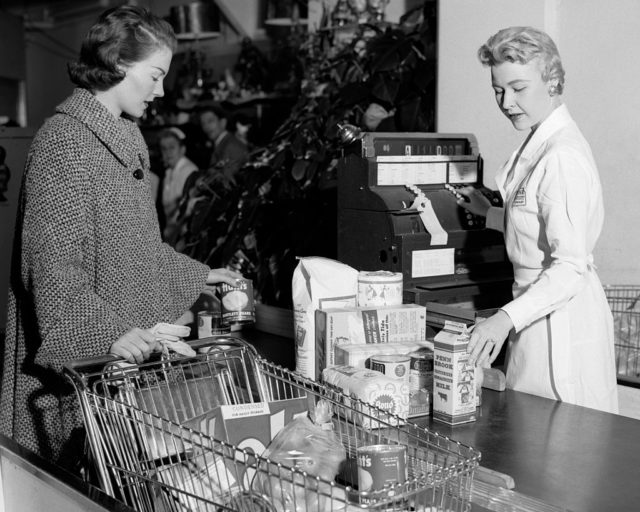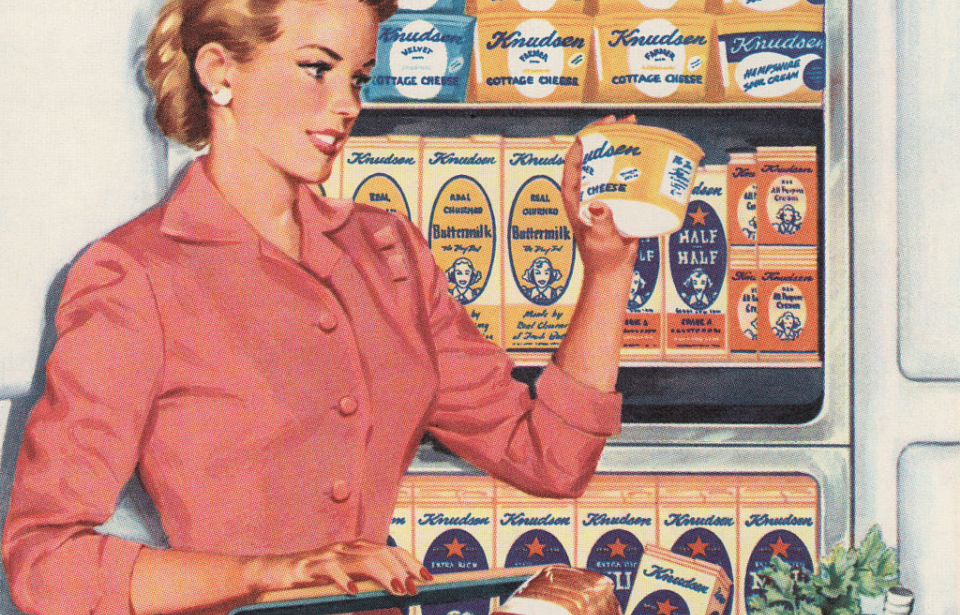The shopping cart is commonplace in today’s grocery and retail stores, but did you know that it didn’t exist 100 years ago? It didn’t come into fruition until the Great Depression, and had to fight an uphill battle to become the consumer staple we know it to be.
A Grocer with an Idea
In 1934, during the height of the Great Depression, Oklahoma grocer Sylvan Goldman purchased numerous Humpty Dumpty locations. The now-defunct grocery chain was struggling financially, similar to other businesses at the time, and Goldman was looking for ways to make his acquisition profitable.

He began studying the chain’s customers to get a better sense of their shopping habits. What he noticed was that most – if not all – of them stopped shopping as soon as their baskets became too heavy, and instead of grabbing a second, they went to the checkout lane.
That’s when he decided to invent something that would enable his customers to spend longer in his stores without having to carry their groceries.
The First Iteration of the Shopping Cart
The inspiration for the first-ever shopping carts came from an item you’d least expect: the folding chair. During the design phase, Goldman placed a grocery basket on the seat of a chair and one underneath, and envisioned the contraption on wheels and lifted a few inches off the ground.
In 1936, he instructed employee and mechanic Fred Young to improve his design. Young figured out how to affix an undercarriage to two hand baskets, one on top and the other toward the bottom. The baskets were removable, allowing the frame to be folded up and stored compactly, and checkout workers were able to easily lift the baskets and ring items through.

Unfortunately, the invention didn’t experience the customer enthusiasm Goldman hoped it would. Men found it an insult to their strength, while women compared it to pushing a baby carriage. The only customers who liked it were the elderly, and overall the majority stuck with what they knew: wooden and metal shopping baskets.
Shopping Carts Begin to Catch On
Not one to let his ingenious invention fail, Goldman worked hard to make the public receptive to the grocery cart. He hired decoy shoppers to wheel them around his stores, providing an in-person demonstration of how they could be used. He also stationed workers at the front door, tasked with greeting customers and offering them carts as they entered.
His efforts paid off. Just three years after they were introduced, shopping carts were a hit.

The introduction of carts into the grocery and retail spheres revolutionized the shopping experience. Instead of being limited by their strength and how much their baskets could hold, customers were now able to meander through stores at a more leisurely pace, meaning they were more likely to purchase items not on their shopping lists.
Enter Orla Watson
In 1946, a man named Orla Watson invented the “telescope cart,” an updated and more convenient version of Goldman’s design. He had the baskets permanently affixed to the cart and redesigned them with hinged backs. This allowed them to “nest,” meaning there was no longer a need to assemble and disassemble them.

Watson attempted to patent his design, but found immediate opposition from Goldman, who, in 1948, released his own version of the telescope cart, called the “nest-kart.” What ensued was a legal battle, as Watson had not granted Golden permission to use his hinge design.
The case was settled a year later, with Goldman ordered to pay Watson one dollar in damages. In exchange, he was granted an exclusive operating license, for which he would pay Watson royalties.
Legal issues arose once more in 1950, when the federal government filed a lawsuit against Watson’s company, Telescope Carts, Inc. This led to an agreement that saw the license given to Goldman be expanded to all manufacturers, which continued until the patent expired.

More from us: 17th Century Shopping List Found Under Floors at Historic English House
Since the 1950s, the shopping cart hasn’t really changed all that much, aside from slight modifications, such as the addition of cupholders. The most notable change came in 1967, when David Allen introduced retractable seat belts for the children’s seats, allowing them to be more safely used by families.
